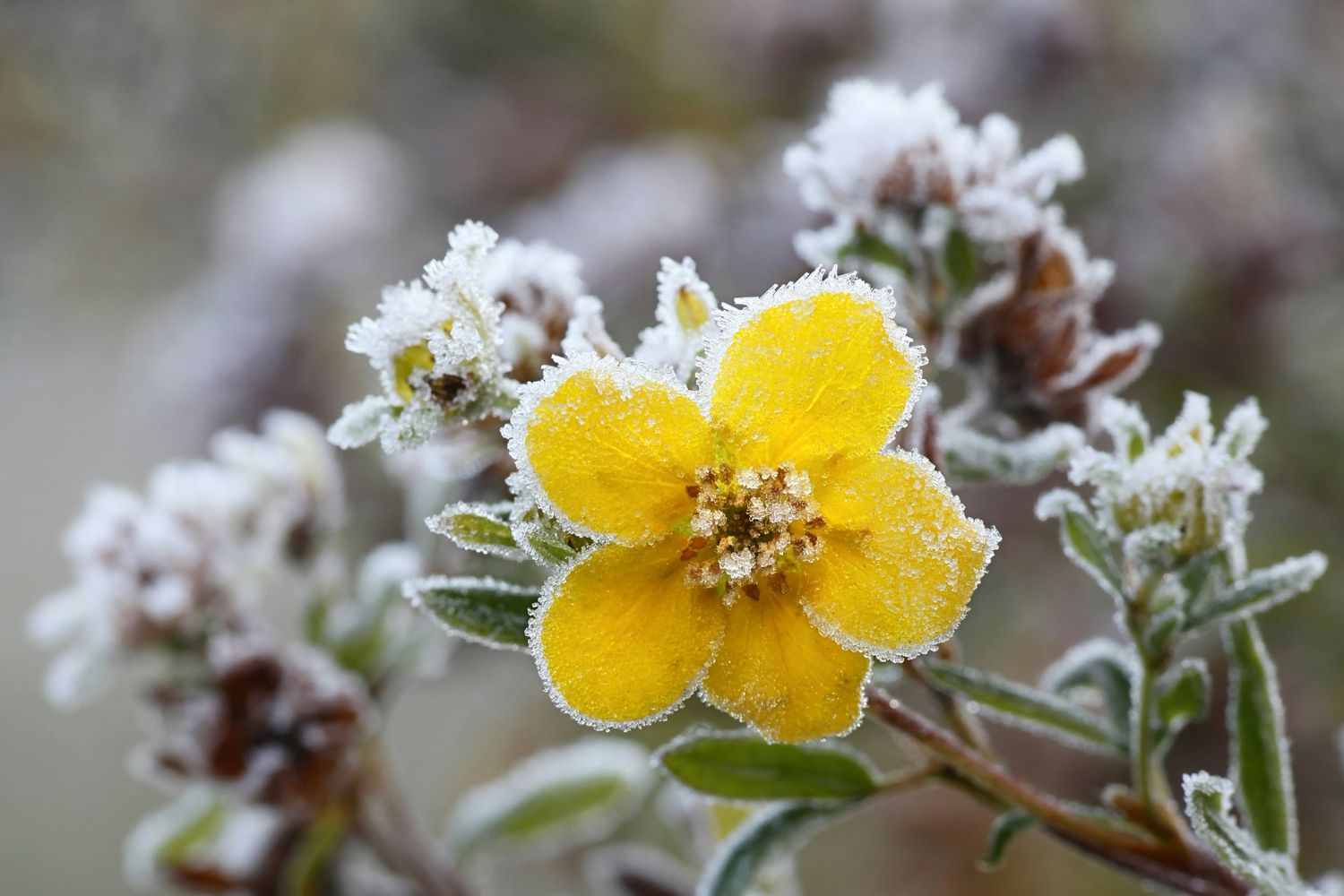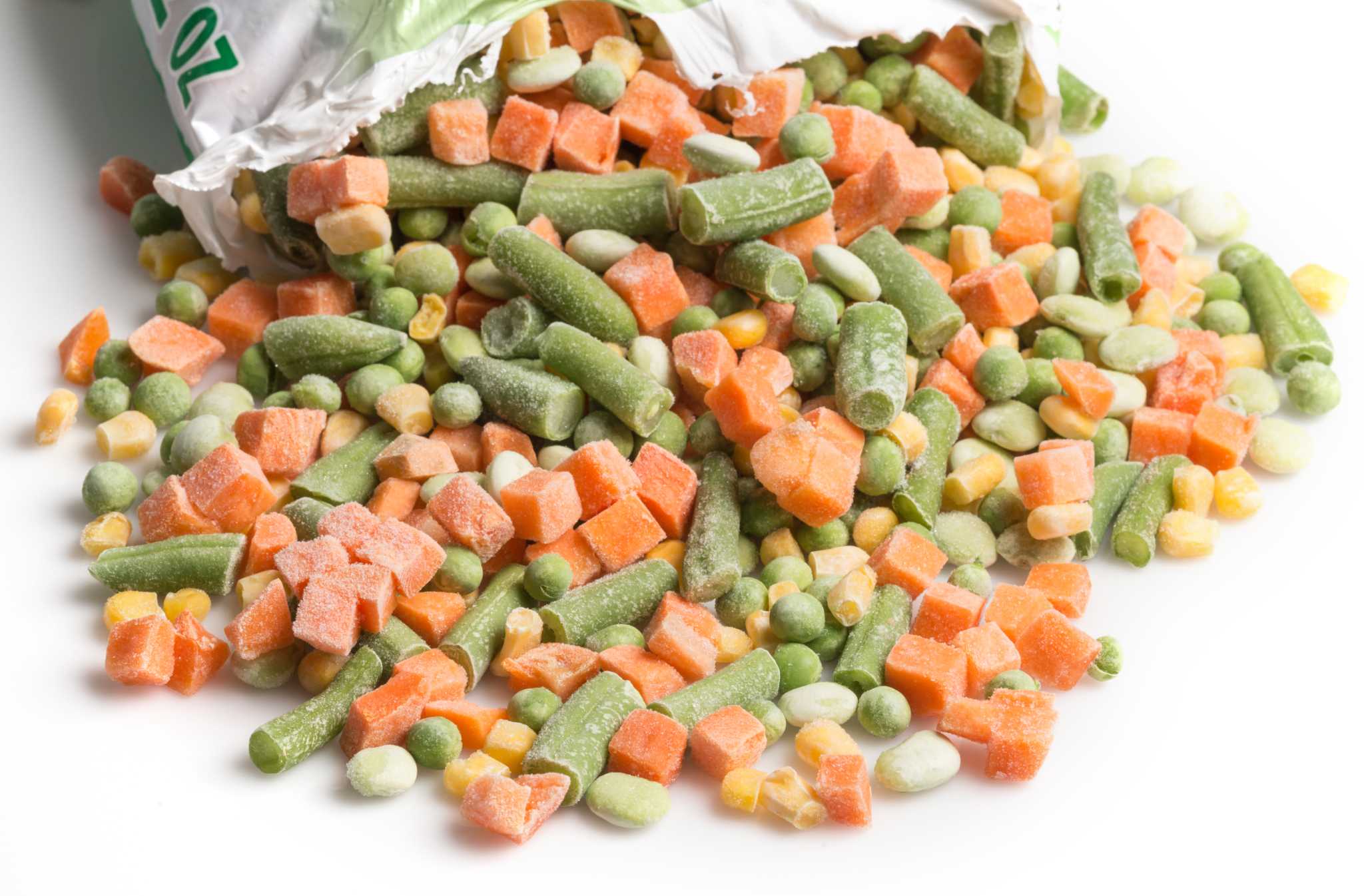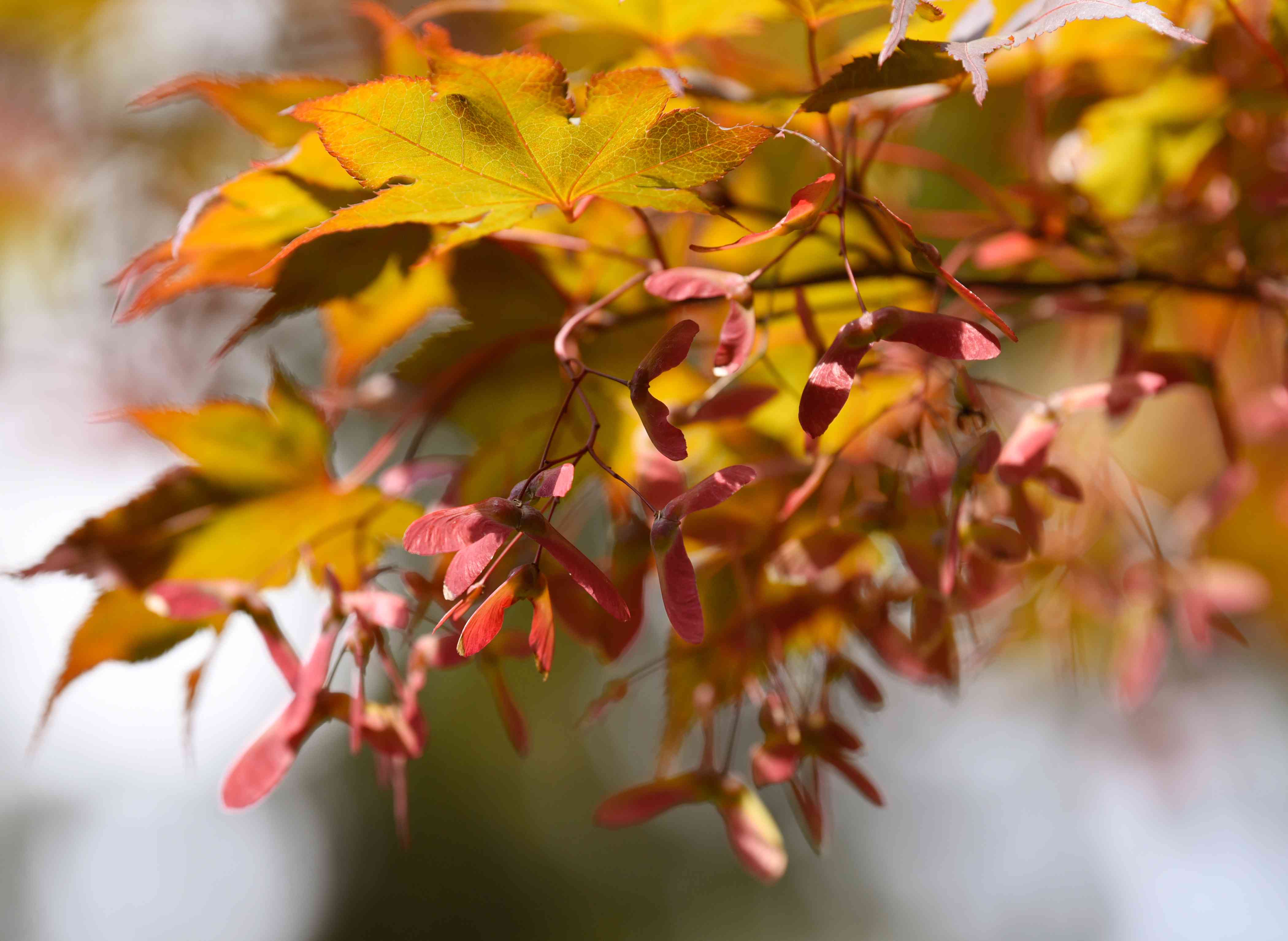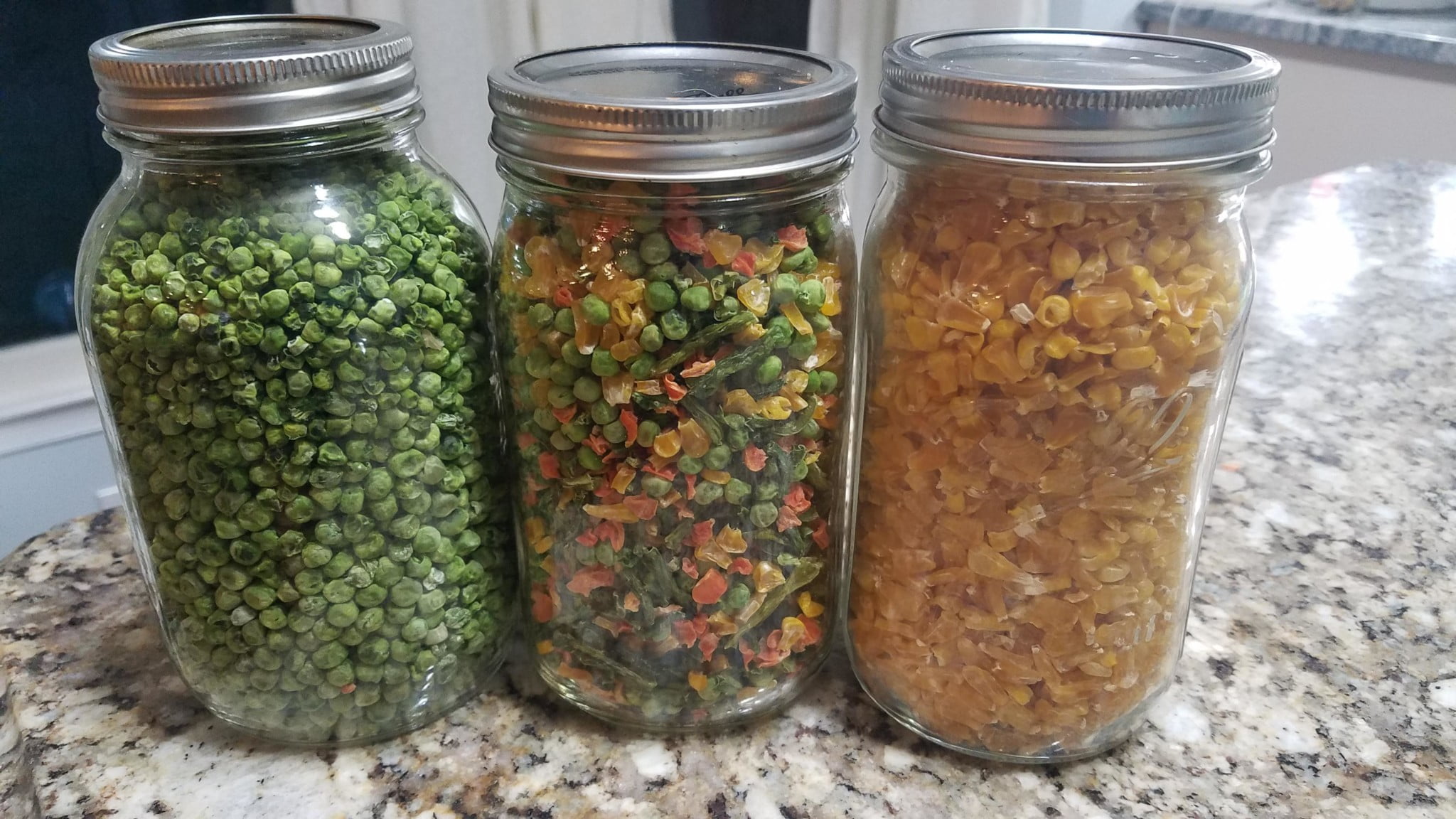Home>Gardening Basics>Understanding Soil>Which Biome Has Frozen Topsoil


Understanding Soil
Which Biome Has Frozen Topsoil
Modified: January 22, 2024
Gain a better understanding of soil in different biomes, including the one with frozen topsoil. Explore the importance and characteristics of soil in this unique environment.
(Many of the links in this article redirect to a specific reviewed product. Your purchase of these products through affiliate links helps to generate commission for Chicagolandgardening.com, at no extra cost. Learn more)
Table of Contents
Which Biome Has Frozen Topsoil?
When it comes to exploring the wonders of our planet, the diversity of biomes never fails to amaze. Each biome holds unique characteristics and features that shape its ecosystem. One such intriguing characteristic is the presence of frozen topsoil, also known as permafrost. Permafrost refers to the permanently frozen layer of soil or rock that exists below the Earth’s surface.
Several biomes around the world are home to frozen topsoil, each with its own distinct set of conditions and climates. Let’s delve into these biomes and discover where frozen topsoil can be found on our planet.
- Tundra Biome: The tundra biome, found in regions with extremely cold climates such as the Arctic, is known for its vast stretches of frozen topsoil. Permafrost dominates the landscape, creating a challenging environment for plant growth as the permanently frozen soil restricts root penetration. However, unique vegetation such as mosses, lichens, and shrubs have adapted to thrive in these conditions.
- Taiga Biome: The taiga biome, also known as the boreal forest, spans across northern regions of North America, Europe, and Asia. While not all parts of the taiga have frozen topsoil, certain areas within this biome experience permafrost. The presence of frozen ground in the taiga influences water drainage patterns and can impact the growth and distribution of vegetation, including iconic coniferous trees like pines, spruces, and firs.
- Arctic Biome: The Arctic biome encompasses the northernmost regions of our planet, including the Arctic Ocean, Arctic tundra, and surrounding areas. This biome is characterized by extreme cold and long winters, making it a prime location for frozen topsoil. The presence of permafrost in the Arctic influences the patterns of surface water bodies, shapes the landscape, and poses unique challenges to Arctic flora and fauna.
- Alpine Biome: The alpine biome consists of high mountain regions that can be found throughout the world, including areas such as the Himalayas, the Alps, and the Rocky Mountains. At high elevations, the temperature drops significantly, leading to frozen topsoil in certain areas. This frozen ground poses challenges for plant life but also provides unique microhabitats for specialized alpine plants to thrive.
Overall, several biomes harbor frozen topsoil, each with their own distinct characteristics and impact on the ecosystem. The tundra, taiga, Arctic, and alpine biomes all showcase the wonders of nature’s ability to adapt and survive in challenging environments. Exploring these biomes not only gives us a deeper understanding of our planet’s biodiversity but also highlights the importance of protecting these fragile ecosystems.
Introduction
Our planet is a vast and diverse ecosystem, filled with an astonishing variety of biomes. These biomes are characterized by unique climatic conditions, vegetation, and wildlife. They play a crucial role in maintaining ecological balance and providing habitats for countless species. One intriguing characteristic that sets some biomes apart is the presence of frozen topsoil, also known as permafrost.
Permafrost refers to the permanently frozen layer of soil or rock that exists below the Earth’s surface. It is a fascinating feature that significantly impacts the landscape and the lives of organisms within these environments. Understanding which biomes have frozen topsoil can offer valuable insights into the intricate workings of our planet and the adaptations of its inhabitants.
In this article, we will explore the biomes that are home to frozen topsoil, examining their unique characteristics and the challenges they pose to life forms. We will delve into the tundra biome, the taiga biome, the Arctic biome, and the alpine biome, uncovering the wonders of these frozen landscapes.
By delving into these biomes, we can gain a deeper appreciation for the incredible diversity and resilience of life on Earth. It showcases the remarkable ability of nature to adapt and flourish even in the harshest conditions. Join us on this journey as we explore the biomes with frozen topsoil and unravel the secrets of their frozen landscapes.
Definition of Frozen Topsoil
Frozen topsoil, also known as permafrost, is a layer of soil or rock that remains permanently frozen below the Earth’s surface. It forms when the ground temperature consistently remains below freezing (0°C or 32°F) for at least two consecutive years.
Permafrost can be found in various depths, ranging from a few centimeters to several meters below the surface. It is commonly found in regions with cold climates, such as the polar regions and high-altitude mountainous areas.
The freezing of topsoil occurs due to a combination of factors. First, cold air temperatures contribute to reaching the freezing point of water, causing the moisture in the soil to freeze. Second, the insulating properties of the snow and ice cover help to maintain the frozen state of the ground.
Frozen topsoil has a significant impact on the surrounding environment. It affects the drainage patterns of water, leading to the formation of lakes, ponds, and wetlands. The frozen ground acts as a barrier, preventing water from percolating downward into deeper layers, resulting in the creation of a waterlogged layer near the surface.
Permafrost also influences the stability of the landscape. The frozen ground provides structural support and prevents erosion, particularly in areas with steep slopes. Thawing of permafrost can lead to differential settlement, causing land subsidence and potentially damaging infrastructure built on top of it.
Furthermore, frozen topsoil has consequences for plant and animal life. In regions with permafrost, the frozen ground limits the depth to which plant roots can penetrate, affecting their ability to access nutrients and stabilize themselves. However, some adapted vegetation, including mosses, lichens, and shrubs, thrive in these cold conditions.
Understanding the definition and characteristics of frozen topsoil is essential for comprehending the complexities of the biomes where it exists. With this knowledge, we can better appreciate the unique challenges and adaptations of organisms living in these frozen landscapes.
Tundra Biome
The tundra biome is a vast and unique ecosystem characterized by extremely cold temperatures, low precipitation, and frozen topsoil. It is predominantly found in the northern regions of the Earth, including the Arctic. The tundra’s frozen landscapes hold a captivating beauty and offer an array of fascinating adaptations by both plants and animals.
One defining feature of the tundra biome is the presence of permafrost, a layer of frozen soil or rock that remains solid throughout the year. This frozen ground restricts the penetration of plant roots, making it difficult for trees to grow. Instead, the tundra is dominated by low-growing vegetation such as mosses, lichens, and shrubs.
The tundra’s freezing temperatures create a harsh environment for any form of life. During the short summer season, the top layer of permafrost thaws, forming a shallow layer of wet soil. This thin layer provides necessary nutrients for plant growth and supports a burst of vibrant wildflowers, grasses, and sedges.
Given the limited vegetation, the tundra biome supports a relatively low diversity of animal species. However, these species have developed remarkable adaptations to survive in this harsh environment. Iconic tundra fauna includes the arctic fox, reindeer, muskoxen, snowy owls, and lemmings.
The tundra is also a vital breeding ground for migratory birds that travel from far distances to nest and raise their young during the brief summer season. The abundance of insects and small rodents provides a food source for these bird species.
The tundra biome plays a significant role in the global carbon cycle. The frozen topsoil traps organic matter and prevents its decomposition. As a result, the tundra acts as a massive carbon sink, storing vast amounts of carbon dioxide. However, climate change poses a threat to this delicate balance. As temperatures rise, the permafrost starts to thaw, releasing stored carbon into the atmosphere and contributing to further global warming.
Exploring the tundra biome offers a glimpse into one of the world’s most extreme and fascinating ecosystems. Its frozen topsoil and unique adaptations demonstrate the resilience of life in the face of adversity. Preserving the fragile tundra biome is crucial not only for the species that call it home, but also for the overall health of the planet.
Taiga Biome
The taiga biome, also known as the boreal forest, is the largest terrestrial biome on Earth. It spans vast regions of North America, Europe, and Asia, covering millions of square kilometers. The taiga biome is known for its extensive forests and, in certain areas, the presence of frozen topsoil.
While not all parts of the taiga have frozen topsoil, certain areas within this biome experience permafrost. The taiga’s cold temperatures, especially during the long winter months, create conditions that allow the ground to freeze to varying depths. The freezing of the topsoil has significant implications for water drainage, vegetation distribution, and the overall ecosystem dynamics.
The presence of permafrost in the taiga biome influences the distribution and growth of vegetation, particularly trees. Iconic coniferous trees like pines, spruces, and firs dominate the landscape, equipped with adaptations to thrive in cold conditions. These trees have needle-like leaves that reduce water loss and can withstand harsh winter weather.
The frozen topsoil affects the water drainage patterns in the taiga. The impermeable layer formed by the permafrost impedes water movement, leading to the formation of numerous small lakes, wetlands, and marshes. These water bodies provide habitats for various species of birds, amphibians, and insects.
Another notable feature of the taiga biome is its wildlife diversity. Many mammals such as bears, wolves, moose, reindeer, and lynx call the taiga their home. These animals have adapted to survive in the cold climate, relying on the resources provided by the extensive forests and the abundance of vegetation.
The taiga biome is also of great significance due to its global carbon storage capabilities. The boreal forests are carbon sinks, absorbing large amounts of carbon dioxide from the atmosphere and storing it in trees and soils. However, the thawing of permafrost in certain areas threatens this balance, as it can release stored carbon into the atmosphere.
The taiga biome presents an awe-inspiring landscape where frozen topsoil interacts with a diverse range of flora and fauna. The intricate relationship between the frozen ground, vegetation, and the wildlife exemplifies the adaptability and resilience of life in these extreme environments. Preserving the taiga biome is crucial for maintaining biodiversity and mitigating climate change by preserving carbon storage capabilities.
Arctic Biome
The Arctic biome is a vast and unique ecosystem that encompasses the northernmost regions of the Earth. It includes the Arctic Ocean, Arctic tundra, and the surrounding areas. This extreme environment is characterized by freezing temperatures, long winter nights, and the presence of frozen topsoil known as permafrost.
The presence of permafrost in the Arctic biome is a defining feature that has a profound impact on the landscape and its inhabitants. Permafrost extends throughout the biome, creating a layer of frozen ground that restricts the growth of larger plant species such as trees. Instead, the Arctic tundra is dominated by low-lying vegetation like mosses, lichens, grasses, and dwarf shrubs.
The frozen topsoil affects the hydrological patterns within the Arctic biome. It impedes water drainage, resulting in the formation of numerous small lakes, ponds, and wetlands. These water bodies provide habitats for a variety of wildlife and support a unique ecosystem of aquatic plants and species.
The Arctic biome is home to a diverse range of wildlife that has adapted to survive in the extreme cold. Iconic Arctic fauna includes polar bears, Arctic foxes, reindeer, walruses, seals, and a wide variety of bird species. These animals have developed specialized adaptations to withstand harsh Arctic conditions, such as thick insulating fur, blubber for insulation, and migratory behaviors.
The frozen topsoil also plays a crucial role in shaping the Arctic landscape. It helps maintain stability by acting as a foundation for landforms like hummocks, polygons, and ice wedges. However, the thawing of permafrost due to climate change is altering the landscape and causing land subsidence, coastal erosion, and the release of stored carbon into the atmosphere.
The Arctic biome is of global significance due to its role in regulating the Earth’s climate. The vast expanses of sea ice reflect sunlight, helping to cool the planet. Additionally, the frozen topsoil of the Arctic acts as a massive carbon sink, storing vast amounts of carbon dioxide. The thawing of permafrost can lead to the release of this stored carbon, contributing to further climate change.
Exploring the Arctic biome reveals the delicate balance between frozen topsoil, unique vegetation, and diverse wildlife. As climate change continues to impact this fragile ecosystem, it is crucial to prioritize conservation efforts that not only protect the Arctic biome’s biodiversity but also mitigate the effects of global warming on a global scale.
Alpine Biome
The alpine biome is a unique and breathtaking ecosystem found in high mountain regions throughout the world. It is characterized by extreme cold temperatures, high elevations, and the presence of frozen topsoil in certain areas. The alpine biome presents a fascinating combination of rocky terrain, icy landscapes, and fascinating adaptations by its flora and fauna.
At high elevations, the alpine biome experiences frigid temperatures that often dip below freezing. These conditions contribute to the presence of frozen topsoil in certain areas, creating a challenging environment for plant life. The thin layer of soil is often rocky and lacks the depth required for substantial root growth.
Despite these challenging conditions, the alpine biome is home to a diverse range of plant species that have adapted to survive in this harsh environment. Carpet-like vegetation such as low-growing shrubs, grasses, and hardy wildflowers are common in the alpine biome. These plants have specialized adaptations to withstand the cold, strong winds, and short growing seasons.
The frozen topsoil in the alpine biome provides unique microhabitats for specialized alpine plants to thrive. These include cushion plants, which grow in compact mounds to protect themselves from the harsh elements, as well as plants that store water in their tissues to survive in the dry and cold conditions.
The animal life in the alpine biome is equally captivating. Adaptations in the alpine fauna allow them to navigate the rugged terrain and cope with the extreme temperatures. Iconic alpine animals include mountain goats, chamois, snow leopards, pikas, and marmots. These animals have thick fur, enlarged lungs for increased oxygen intake, and specialized walking techniques to navigate steep slopes.
The alpine biome is also a critical water source. The frozen topsoil acts as a natural reservoir, storing snow and ice throughout winter and gradually releasing it during the warmer months. This slow release of meltwater provides a crucial water supply for lower-lying ecosystems, including valleys and plains.
In recent years, the alpine biome has faced threats from climate change, leading to the retreat of glaciers and changes in precipitation patterns. These changes can impact the delicate balance of the ecosystem and disrupt the unique adaptations of its plant and animal life.
Exploring the alpine biome offers a glimpse into a world of extreme beauty and remarkable adaptation. The frozen topsoil, unique vegetation, and resilient wildlife combine to create an ecosystem that is both delicate and awe-inspiring. Protecting the alpine biome is of utmost importance to preserve these fragile habitats and the rich biodiversity they support.
Conclusion
The presence of frozen topsoil, also known as permafrost, in various biomes around the world adds a fascinating dimension to our understanding of the Earth’s ecosystems. The tundra, taiga, Arctic, and alpine biomes all showcase the unique challenges and adaptations that arise in the presence of frozen ground.
The tundra biome, with its vast stretches of frozen topsoil, supports a remarkable array of vegetation that has adapted to thrive in extreme cold. The taiga biome, though not entirely covered in permafrost, experiences its influence in certain areas, shaping the distribution of plant life and water drainage patterns.
The Arctic biome, with its frozen topsoil extending throughout vast regions, presents a challenging environment for both flora and fauna. The iconic polar bears, Arctic foxes, and other wildlife have adapted to survive in the harsh conditions imposed by the presence of permafrost.
The alpine biome, found in high mountain regions, provides unique microhabitats supported by frozen topsoil. Alpine plants have evolved specialized adaptations to overcome the harsh conditions of thin soil and extreme temperatures.
Understanding these biomes with frozen topsoil not only deepens our appreciation for the resilience of life on Earth but also highlights the delicate balance that exists within these ecosystems. Preserving and protecting these biomes are vital for the sustenance of biodiversity, the regulation of the global climate, and the survival of diverse species.
As human-induced climate change continues to impact these delicate ecosystems, it is essential to take collective action to mitigate its effects. Sustainable practices, conservation efforts, and responsible management of resources are crucial for preserving the well-being of the biomes with frozen topsoil.
By recognizing and valuing the importance of these biomes, we can contribute to the preservation of our planet’s natural wonders and ensure that future generations have the opportunity to experience the beauty and diversity of these frozen landscapes.








